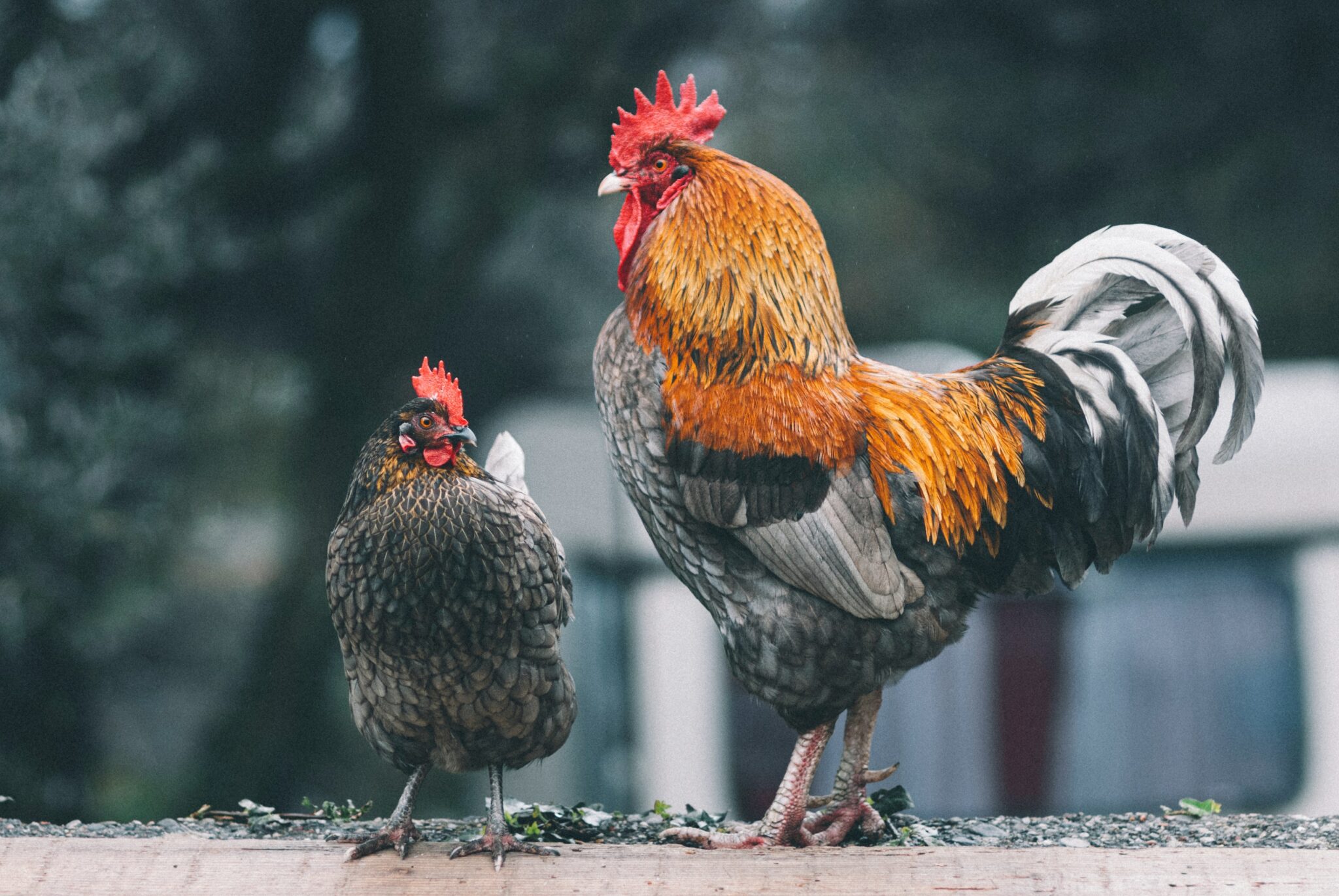I. Introduction: Setting the Stage for the Rooster Mystery
Chicken is arguably the most ubiquitous meat in our global diet, but have you ever wondered why we rarely see rooster meat on our menus? Let’s unravel this culinary conundrum together.
A. Brief Overview of the Commonality of Chicken in Our Diet
Chicken has long held a comfortable spot in our food repertoire. Its versatility and affordability have catapulted it to culinary stardom worldwide. However, this widespread consumption predominantly involves hens or broilers, not roosters.
B. Introduction to the Puzzle: Why is Rooster Meat Not as Common?
Though roosters are part of the same species as hens, they have been largely left out of our culinary lexicon. The reasons are rooted deeply in history, biology, culture, and economics.
II. Historical Perspective: Tracing the Trail of the Rooster
A. Examination of Early Human Domestication of Poultry
Poultry domestication can be traced back to 2000 B.C, but roosters and hens were prized for different reasons. Roosters were often used for cockfighting and as alarm clocks, while hens provided a steady supply of eggs.
B. Role of Roosters in Early Human Societies
Roosters held a symbolic and practical role in various cultures, being seen as signs of vigilance and bravery. Their practicality as alarm clocks and their value in cockfighting and religious rituals often overshadowed their potential as a food source.
C. Historical Reasons for Favoring Hens Over Roosters
As societies moved towards agrarian practices, hens’ ability to lay eggs made them more valuable to sustain than roosters, creating a culinary tradition that has lasted until today.
III. Understanding the Science: Biology of Roosters vs. Hens
A. Discussion on the Biological Differences Between Roosters and Hens
Despite being of the same species, roosters and hens differ in many ways, from size to temperament. These differences extend to their meat, with roosters generally having tougher, leaner flesh due to their active lifestyle and larger muscles.
B. Examination of Rooster Meat Quality and Texture
Rooster meat has a reputation for being tough and gamey, unlike the tender, mild hen meat we are accustomed to. The physical exertion roosters experience contributes to a denser muscle structure, making their meat less tender.
C. Insights Into How Age and Sex of Poultry Affect Meat Quality
Poultry’s age and sex significantly influence meat texture and flavor. While hens’ and broilers’ meat is tender and delicate, rooster meat is more robust, demanding careful, slow cooking to mitigate its toughness.
IV. Societal Influences: The Cultural Impact on Our Plate
A. Cultural Symbolism of Roosters Across Different Societies
Across cultures, roosters are often viewed symbolically, representing traits such as courage, honesty, and physical strength. This cultural reverence can influence culinary preferences, leaving rooster meat off the menu.
B. Influence of Religious, Societal Norms, and Taboos
Certain societies regard roosters as sacred or associate them with specific rituals, leading to taboos against consuming their meat.
C. Effect of Roosters’ Behavioral Traits on Their Desirability as Food
Roosters’ aggressive behavior can also make them less desirable as livestock, with farmers often preferring the quieter, less combative hens.
V. Economics and Sustainability: The Rooster’s Hidden Potential
A. Analysis of the Economic Implications of Using Roosters for Meat
While currently underutilized, roosters offer potential economic benefits. By incorporating them into the meat industry, we could diversify the poultry market and utilize a currently underused resource, leading to economic efficiency.
B. Examination of the Environmental Impact of Raising Roosters for Consumption
From an environmental perspective, incorporating roosters into our diets could help promote sustainability. As part of an integrated farming system, roosters can contribute to organic pest control, reducing the need for chemical pesticides.
C. Exploration of the Potential Sustainability Benefits of Rooster Meat
By reducing waste and promoting biodiversity in our food systems, the use of rooster meat aligns with the sustainable food practices. It’s a small step toward preserving our planet while diversifying our palate.
VI. The Rooster in the Culinary World: Flavors, Dishes, and Gastronomic Possibilities
A. Profiles of Global Cuisines Where Rooster Meat is Used
While the Western world may shy away from rooster meat, it has been embraced elsewhere. From France’s Coq au Vin to Spain’s Arroz con Gallo, rooster meat has a cherished place in some global cuisines.
B. Exploration of Traditional and Contemporary Recipes Using Rooster Meat
Discover the rich, robust flavor of rooster meat through both traditional and innovative recipes. The toughness that once discouraged its consumption can be transformed into a culinary asset with slow-cooking methods.
C. Discussing Taste, Texture, and Unique Attributes of Rooster Meat
Rooster meat is distinctively flavorful, with a stronger, gamey taste that sets it apart from the milder flavors of hen meat. The texture, although initially tougher, becomes succulent and tender with slow, careful cooking.
VII. Future of Food: Could Roosters Be Next?
A. Evaluation of the Market Potential for Rooster Meat
There lies untapped potential in the rooster meat market. As consumers become more adventurous and sustainability-focused, rooster meat could carve out a niche for itself in the world of gastronomy.
B. Consumer Attitudes Towards Diverse Sources of Protein
The growing trend of exploring diverse sources of protein, coupled with an increasing focus on sustainable living, might open doors for rooster meat in contemporary diets.
C. Impact of Alternative Meat Production Methods, Such as Lab-Grown Meat, on the Poultry Industry
While the advent of lab-grown meat and plant-based proteins is transforming the meat industry, traditional sources like rooster meat still hold relevance. Their potential for sustainability and culinary diversity keeps them firmly on the table.
VIII. Conclusion: Reimagining Our Relationship with Roosters
A. Recap of Key Points About Rooster Meat’s Absence From Our Plates
We’ve journeyed through history, culture, biology, and economics to understand why rooster meat is absent from our plates. But as we’ve seen, this absence is not a decree of nature, but a result of human choices and traditions.
B. Call to Action: Encouraging Culinary Exploration and Sustainable Practices
Let’s challenge ourselves to embrace gastronomic diversity, exploring flavors off the beaten path while promoting sustainability. The humble rooster, with its robust flavor and untapped potential, is a good place to start.
C. Final Thoughts on the Potential Future of Rooster Meat in Global Gastronomy
As we look towards the future of food, let’s not forget the potential of our past. The rooster, with its rich history and tantalizing taste, might just be ready to crow its way into the culinary spotlight.




